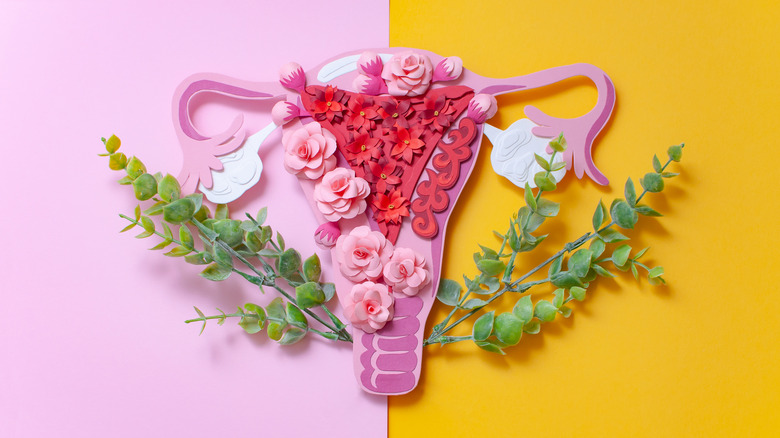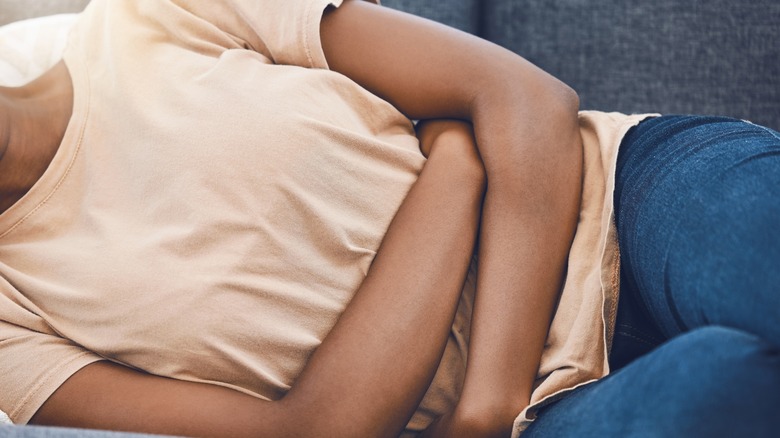What It's Really Like To Live With Endometriosis
Since endometriosis is a fairly common condition, there's a reasonable chance that you may know somebody who has it, or you may even have it yourself. Around the world, there are approximately 190 million women and girls of reproductive age who are impacted by endometriosis, which equates to about 10% of women, according to the World Health Organization (WHO). Unfortunately, endometriosis doesn't currently have a cure. Therefore, in order to help individuals who are affected by this condition, conducting research and raising global awareness about endometriosis are crucial.
The Office on Women's Health reports that endometriosis is most common in women in their 30s and 40s. Having the condition can affect a woman's fertility and her ability to conceive a baby. It can be diagnosed by a pelvic exam, an imaging test like an ultrasound or MRI, or a surgical operation called a laparoscopy.
Endometriosis occurs when tissue grows outside the uterus in places where it normally shouldn't be, such as the ovaries and fallopian tubes. As explained by Johns Hopkins Medicine, the abnormal tissue reacts similarly to the endometrium that lines the uterus during a woman's menstrual cycle, causing bleeding inside the pelvis as well as inflammation and swelling of the normal tissue.
If endometriosis sounds like it would be a painful condition, that's because it is. Because it's an incurable condition, treatment primarily focuses on alleviating painful symptoms. This may cause one to wonder — what does it feel like for a woman who is living with endometriosis?
What does it feel like to have endometriosis?
Women living with endometriosis often have to learn how to work around their painful symptoms. According to Insider, the pain accompanying endometriosis can have a negative impact on an individual's career, social life, and relationships, causing them to miss social events or work days. Endometriosis pain doesn't only occur when a woman is on her period, either, and can sneak up on someone anytime throughout the month. When experiencing endometriosis pain, women can feel it in their abdomen or lower back, in their thighs or legs, or in their intestines.
Someone with endometriosis may also experience pain during or after sexual intercourse, or when going to the bathroom during their urination or bowel movements. One patient told Insider that endometriosis pain feels like a knife ripping through the lower half of her torso. For this reason, it might come as no surprise that some research has suggested a relationship between endometriosis and mental health conditions, such as depression, shares Healthline.
Healthline further reports that the pain is sometimes so severe that over-the-counter medications are unable to alleviate it. In fact, it can be so painful that some women will need to have surgery to remove the abnormal tissue. Making certain lifestyle changes might also be able to relieve symptoms. These include diet changes such as eating more vegetables and less gluten, incorporating light to moderate exercise into your daily routine, and using a heating pad when experiencing endometriosis pain.


